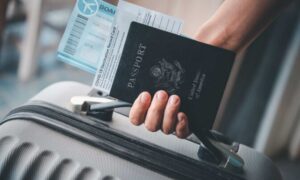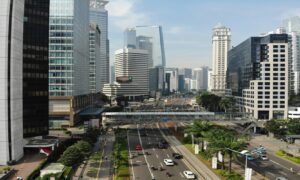Unexpectedly, Indonesia has a region called the ‘lost world’. Where is it and why did it disappear? That area is Sumba. This area in East Nusa Tenggara is home to various animals, most of which became extinct thousands of years ago. These animals are mini elephants, mice, giant lizards, and even Komodo dragon species.
This is the result of research uploaded in a journal entitled ‘Proceedings of the Royal Society B’. The report refers to the discovery of fossils of these animals. The report states that fossils of various species lived on Sumba around 12,000 years ago.
The research found serious findings that made it possible that rare animals originally lived in the Sumba region. Especially after the discovery of Komodo dragon fossils which currently only live on Komodo Island, Flores. This fossil gave rise to the assumption that the animal, which is now included https://www.atrbpnkabserang.com/ in the endangered animal category, actually came from Sumba.
The expedition to research these extinct animals took place from 2011 to 2014. The research team came from the Zoological Society of London (ZSL). They collected fossils from Sumba, as part of the archipelago formerly called ‘Wallacea’. This area originates from the biologist Alfred Russel Wallacea who first established territorial boundaries based on the distribution of animal species in Indonesia in the 19th century.
Regions within Wallacea include Sumba, Sulawesi, Lombok, Flores, Halmahera, Buru, and Seram. The Wallacea region gained popularity in 2004, when an archaeological group uncovered fossils of an extinct creature called the ‘hobbit’ or Homo Floresiensis. This creature was found in Flores, the northern part of Sumba.
Until now, research on Sumba itself is still very rare. There have not been many surveys of fossils and wild life there. “Perhaps because there are too many islands in Indonesia to study. It is still rare for biologists or paleontologists to focus on the diverse regions of Indonesia,” said Samuel Turvey, research member at ZSL.
Scientists hope that further research on Sumba can be carried out to gain insight into the evolution of species in the area. “Discoveries in this area could open up amazing insights into lost worlds. There are many animals that evolved on the isolated islands of Wallacea but then became extinct with the emergence of modern human civilization,” said Turvey.
The Charm of the Sumba Savanna that Changes According to the Seasons
Warinding Hill is being sought after by tourists, both local and foreign, as an exotic natural destination. Interestingly, the natural charm of the savanna that Warinding Hill offers always changes with the changing seasons. So, when is the best time to see the Sumba savanna? The Tapal Batas Team together with BAKTI Kominfo had the opportunity to visit one of these superior natural destinations on (23/11/2023). Warinding Hill is in the eastern part of Sumba, precisely in Pambota Jara Village, Pandawai District or about 25 kilometers from Waingapu City.
At that time, Warinding Hill offered beautiful natural views with expanses of savanna or grass when visited in the dry season. It offers a truly unique experience for visitors seeking a different kind of natural beauty.
The reason is, the dense green that usually dominates the panorama of Warinding Hill has changed to the typical yellow and brown colors of the savanna. Low trees and bushes also dot the plains, creating a landscape that resembles the African savanna.
The view of the expansive savanna attracts travelers to capture the moment with a panoramic backdrop of undulating hills. Travelers can also pose with horses and traditional clothes rented by local residents to emphasize the impression of typical Sumba cultural tourism.
The rental price for horses and traditional clothes made from woven cloth is IDR 50 thousand each for 1 person. Visitors can use as much as they like to take photos at various locations that can be reached on Warinding Hill.
Apart from taking photos on horseback wearing traditional Sumba clothing, travelers can trek for a while to enjoy the sunrise or sunset on Warinding Hill. The orange tinge of the sky that radiates at dawn and dusk feels serene.
According to local residents, Warinding Hill is more exotic during the dry season and cooler after the rainy season. Both seasons have their own advantages and beauty.
“Equally good for tourism,” said Lukas.
Local residents advise that if travelers want to see the dry and more exotic savanna of Warinding Hill, come during the summer, specifically around July – September.
In conclusion, Warinding Hill in East Sumba is the perfect destination for travelers looking for tranquility and unspoiled natural beauty. Warinding Hill not only satisfies the eyes but also provides a wealth of experiences and unforgettable memories.
The 5 4G BTS in Pandawai District out of 89 4G BTS units in East Sumba Regency were built in the 2021/2022 budget year. Meanwhile, one main tower unit was built in Palakahembi Village, Pandawai District near the Palapa Ring Network Operation Center (NOC) in 2019. The main tower functions to spread the Palapa Ring internet network to BTS-BTS and then to villages such as Pambota Jara Village where Warinding Hill.



































